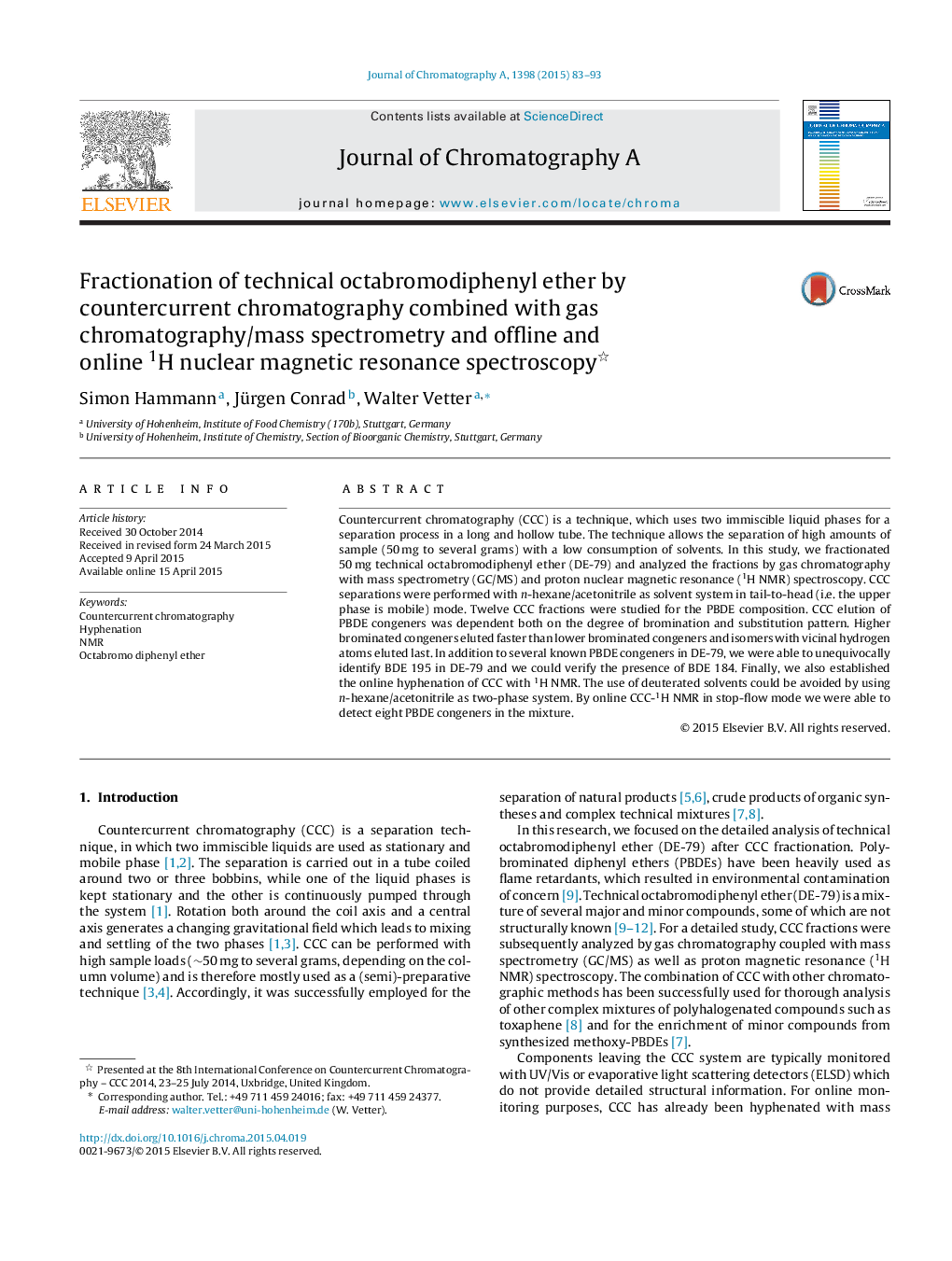| Article ID | Journal | Published Year | Pages | File Type |
|---|---|---|---|---|
| 1199430 | Journal of Chromatography A | 2015 | 11 Pages |
•Online hyphenation of CCC and 1H NMR was successfully established.•Aromatic analytes were separated in n-hexane/ACN, i.e. without deuterated solvents.•Technical octabromodiphenyl ether was separated in tail-to-head mode.•Elution of the PBDE was depending on degree of bromination and bromination pattern.•Eight major PBDEs were detected by online CCC-1H NMR in the stopped flow mode.
Countercurrent chromatography (CCC) is a technique, which uses two immiscible liquid phases for a separation process in a long and hollow tube. The technique allows the separation of high amounts of sample (50 mg to several grams) with a low consumption of solvents. In this study, we fractionated 50 mg technical octabromodiphenyl ether (DE-79) and analyzed the fractions by gas chromatography with mass spectrometry (GC/MS) and proton nuclear magnetic resonance (1H NMR) spectroscopy. CCC separations were performed with n-hexane/acetonitrile as solvent system in tail-to-head (i.e. the upper phase is mobile) mode. Twelve CCC fractions were studied for the PBDE composition. CCC elution of PBDE congeners was dependent both on the degree of bromination and substitution pattern. Higher brominated congeners eluted faster than lower brominated congeners and isomers with vicinal hydrogen atoms eluted last. In addition to several known PBDE congeners in DE-79, we were able to unequivocally identify BDE 195 in DE-79 and we could verify the presence of BDE 184. Finally, we also established the online hyphenation of CCC with 1H NMR. The use of deuterated solvents could be avoided by using n-hexane/acetonitrile as two-phase system. By online CCC-1H NMR in stop-flow mode we were able to detect eight PBDE congeners in the mixture.
